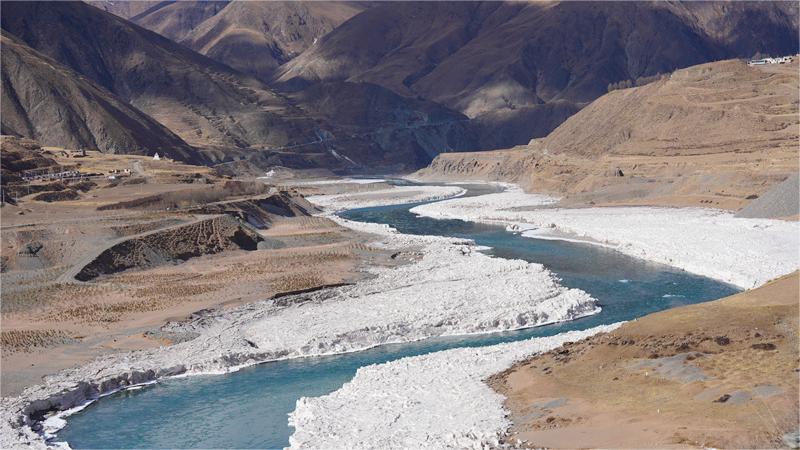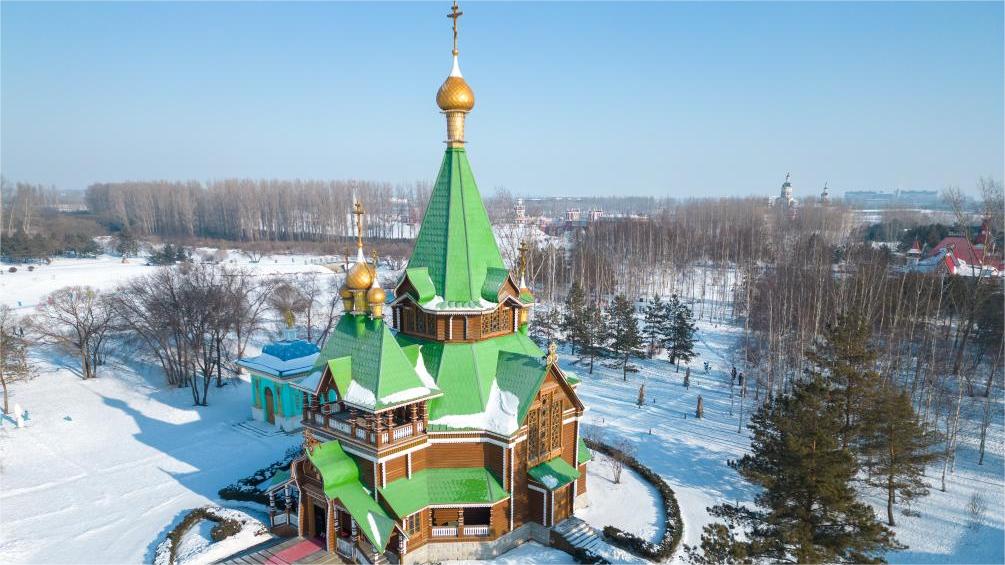President's nationwide trips show road to the future
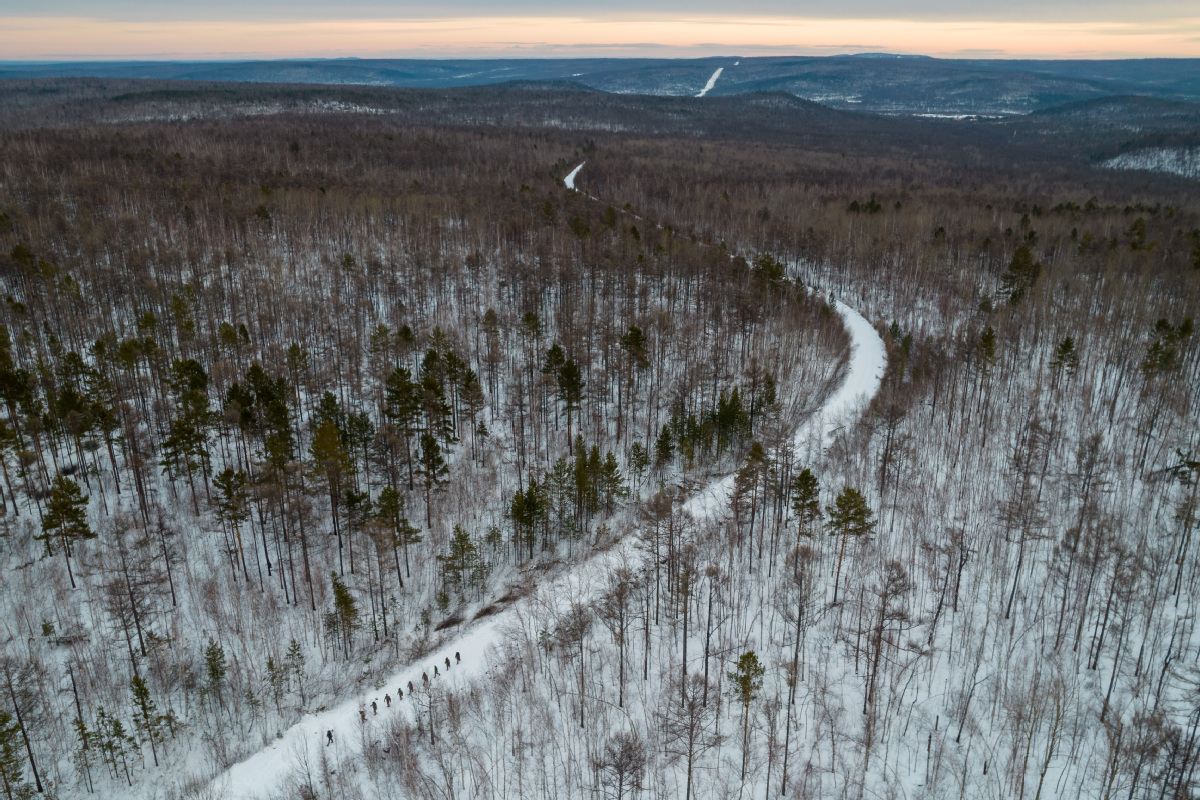
An aerial photo of Mohe Forest Farm in Heilongjiang Province. ZHANG TAO/XINHUA
He emphasizes need for modernization, innovation, integrated development
For decades, Mo Chongxu's sugar cane plantation has been a vital source of income — allowing his parents to raise him and his siblings, and allowing him and his wife to pay their daily bills and tuition for their three children.
However, cultivating the crop is now vastly different from when he inherited the trade from his father.
In those days, they had to endure stifling heat throughout the cultivation process, said Mo, who lives in a village in Laibin, Guangxi Zhuang Autonomous Region.
"Mechanization is now being seen in all farming procedures, including growing, pesticide application and harvesting, and we can work throughout the day without having to worry about heatstroke," the 41-year-old said.
Mo is among some 520,000 sugar cane growers in Laibin, a city where the crop has been cultivated for 1,000 years and contributes to about 10 percent of China's sugar production.
On Dec 14, Mo was among a group of farmers who welcomed President Xi Jinping, who is also general secretary of the Communist Party of China Central Committee, when he made a fact-finding trip to Laibin.
Xi asked about Mo's family members and their sugar cane farms, before urging regional officials to help boost the farmers' incomes.
The president views the work of farmers such as Mo as being closely tied to hopes for the nation's self-reliance in the sugar industry, and more broadly, its food security.
More important, modernization of the agricultural sector and rural areas is a vital part of Chinese modernization, a key vision set out by Xi at the Party's 20th National Congress in 2022 to advance the nation's great rejuvenation.
Xi made 16 domestic fact-finding trips nationwide last year, traveling to 15 provincial-level regions and outlining key steps for rural modernization, ecological protection, self-reliance in science and technology, and the drive for common prosperity.

Pang Shanshan, a worker at the farm, conducts a forest clearing operation in January last year. ZHANG TAO/XINHUA
Han Qiang, dean of the School of Marxism at Beijing Foreign Studies University, said Xi put forward comprehensive visions of Chinese modernization by taking into account the actual situation in various regions.
"During the trips, the president discussed both theory and methodology, while strategically planning the advancement of Chinese-style modernization at the start of the nation's new journey," he said.
Integrated development
One priority for Xi on his domestic travels last year was to advance integrated development for different regions.
In May, he visited Xiong'an New Area, about 100 kilometers southwest of Beijing, to push for new progress in the nation's "city of the future".
Speaking to officials during the trip, Xi stressed the need to advance the high-quality and high-standard development of Xiong'an, a landmark project for coordinating the growth of Beijing and neighboring Tianjin and Hebei Province.
The president laid out the requirements for making Xiong'an an innovation hub and a fertile ground for entrepreneurship in the new era. He said it must strive to build a first-class business environment and formulate a comprehensive set of special support policies to attract and gather domestic and foreign forces, and capital.
Beijing Eyecool Technology Co, which researches and develops artificial intelligence, is one of the 219 high-tech startups that have moved their headquarters to Xiong'an in the past years.
Zhou Jun, the company's founder and CEO, said the decision to relocate to Xiong'an has been fully vindicated, as the company's revenue has soared to a historic high.
He said the infrastructure in Xiong'an has been increasingly refined, with institutional reforms delivering a transparent business environment for companies.

Forest rangers work in Mohe in January last year. ZHANG TAO/XINHUA
"Xiong'an has become a fertile ground for innovation and entrepreneurship," he said.
In April and September, Xi traveled to Guangdong and Heilongjiang provinces, respectively, to advance national strategies for developing the Guangdong-Hong Kong-Macao Greater Bay Area and revitalizing the northeastern areas of the country.
He also visited Jiangxi Province in October to present a new vision for developing the Yangtze River Economic Belt, before going to Shanghai to outline steps for developing the Yangtze River Delta region.
Last year, the nation's top leadership enhanced the top-level design for coordinating regional development by merging several leadership groups into one dedicated group. They included those for development, revitalizing the northeast, and the coordinated development of the Beijing-Tianjin-Hebei region.
High-quality growth
Behind the emphasis placed by Xi on advancing regional integration is the nation's strong commitment to moving forward with its common prosperity drive and fostering a new development pattern.
Ma Liang, a professor of public administration at Renmin University of China, said furthering major strategies for integrated regional development will help China narrow the divide between different areas and press ahead with high-quality development.
"Regional integration has been a key part of the experience during China's successful poverty alleviation campaign, as it enables different regions to apply their comparative strengths," he said.
In 2022, GDP in the Beijing-Tianjin-Hebei region and the Yangtze River Delta reached 10 trillion yuan ($1.4 trillion) and 29 trillion yuan, respectively, while in the Guangdong-Hong Kong-Macao Greater Bay Area it stood at 10.46 trillion yuan, making the regions cornerstones of the Chinese economy and key sources of high-quality development.
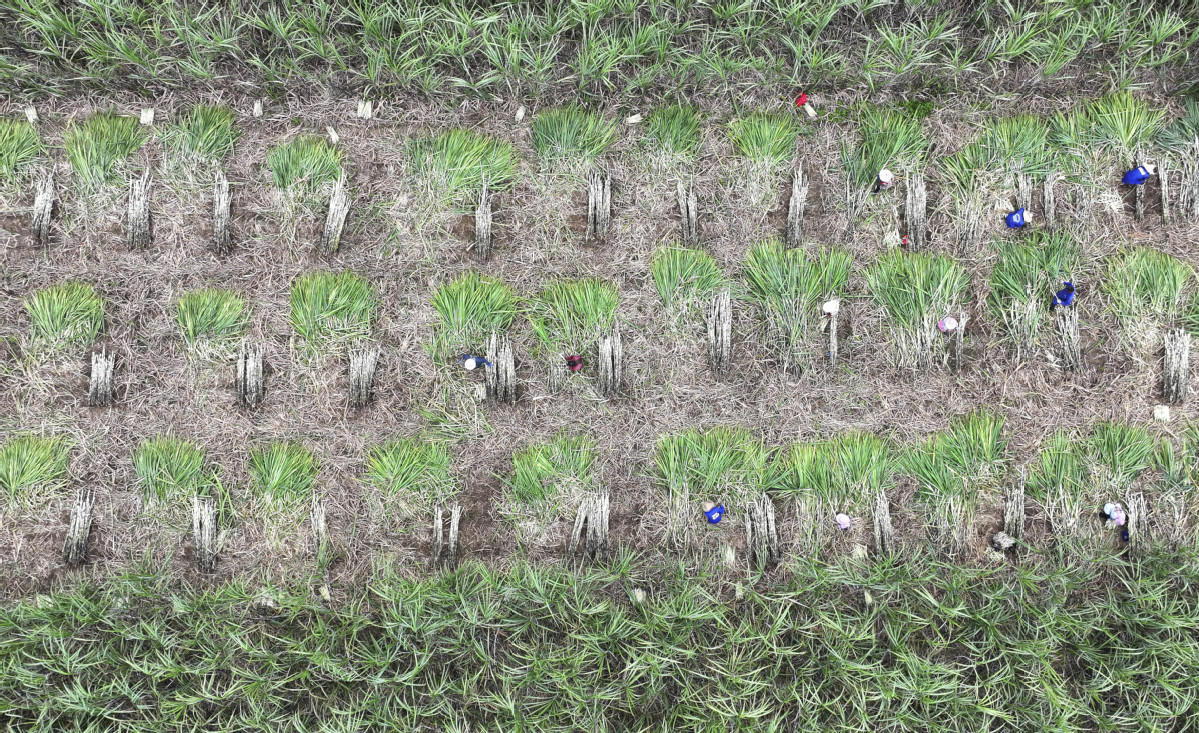
An aerial photo of a sugar cane field in Laibin, Guangxi Zhuang Autonomous Region, last month. ZHOU HUA/XINHUA
As Xi inspected China's more affluent eastern regions, he voiced earnest expectations for them to lead in modernizing the nation and pave the way for high-quality growth.
During a trip to Shanghai from Nov 28 to Dec 2, he called for the Yangtze River Delta, which comprises Shanghai and Jiangsu, Zhejiang and Anhui provinces, to better lead the nation on the path to modernization.
He highlighted the significance of integrated development in the region, one of China's major industrial powerhouses, to further enhance its innovation capabilities, industrial competitiveness, development levels, and lead the way in forming a new pattern of higher-level reform and opening-up for China.
While traveling to Heilongjiang Province in September, Xi said pushing forward the Chinese path to modernization would require the northeastern region to enhance its role as a strategic pillar.
The northeast, although confronted by population outflows and slowdowns in economic growth in recent years, has remained a key region for ensuring the nation's food security. In 2022, the three northeastern provinces of Liaoning, Jilin and Heilongjiang accounted for more than 20 percent of China's total food production.
Xi laid out requirements for the northeast to press ahead with industrial innovation through innovation in science and technology, stressing that the foundation for the region's revitalization lies in the real economy.
Common prosperity
The president showed particular concern for public well-being during his fact-finding trips, as he twice visited groups hit hard by natural disasters to reassure them of the government's commitment to providing relief.
"I always keep disaster-affected people in my thoughts," he told households struck by summer floods in Heilongjiang.
To help families get through the long and arduous winters in the northeast, Xi reiterated the need for the authorities to adopt meticulous measures to ensure access to food, drinking water, housing, transportation, jobs and education.
In November, he inspected regions hit by summer floods and geological disasters in Beijing and neighboring Hebei Province, before the arrival of winter in northern China.
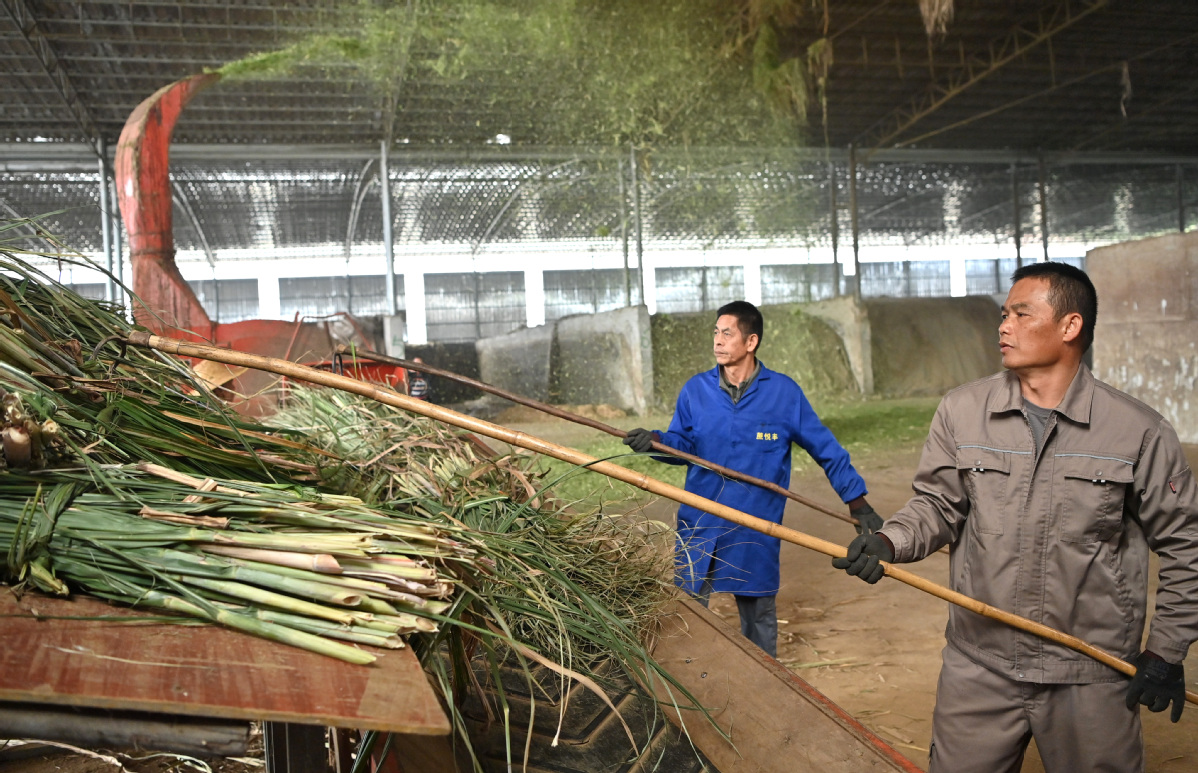
Workers crush sugar cane leaves in preparation for making animal feed at a factory in Laibin last month. ZHOU HUA/XINHUA
He spent a whole day on the road, reviewing the reconstruction of disaster-affected villages, homes, schools and water conservation projects.
The Communist Party of China serves the people and always regards them as the highest priority, and it will spare no effort, whether it is in emergency response and disaster relief, or post-disaster recovery and reconstruction, Xi told the families.
Wang Feng, a scholar of Party governance at Beijing Normal University, said Xi's particular concern for vulnerable groups is in line with the Party's founding mission.
"Inquiring about the well-being of the people in terms of their clothing, food, housing, transportation and safety vividly illustrates the profound care for the people from the leader of a great nation," he said.
For some businesses, Xi's trips served as assurances that the nation remains committed to reform and opening-up.
During his trip to Guangdong Province, Xi visited LG Display's manufacturing base in Guangzhou and GAC Aion New Energy Automobile Co, inspecting production lines and product displays, and speaking with executives and workers.
He said he hoped foreign investors could seize the opportunity and build up their presence in China in the Guangdong-Hong Kong-Macao Greater Bay Area, further explore the Chinese market, and make new breakthroughs in their development.
He stressed that China must prevent any weakening of its real economy in its modernization process.
Zeng Qinghong, chairman of GAC Group, the parent company of GAC Aion, said after the trip that the president gave the company a "great boost in confidence at a critical juncture for development of the auto sector and high-end manufacturing".
Xi's strong emphasis on China's food security and self-reliance in agriculture has also strengthened farmers' confidence in expanding the scale of their operations.
Mo, the farmer in Laibin, said he is planning to expand his sugar cane plantation from three hectares to 20 hectares in the near future.
"It was a moment of glory for me to receive recognition from the president. With full backing from the government, the prospects for growing sugar cane are even brighter," he added.
Photos
Related Stories
- Xi's uncompromising fight against corruption
- Senior government officials study Xi's speech, vow to improve conduct, combat corruption
- Xi, Maldivian leader elevate relations
- Senior legislators study Xi's speech, guiding principles of CPC disciplinary agency plenum
- Senior political advisors study Xi's speech, guiding principles of CPC disciplinary agency plenum
- Xi notes global impact of US ties in letter to Iowa friend
Copyright © 2024 People's Daily Online. All Rights Reserved.







